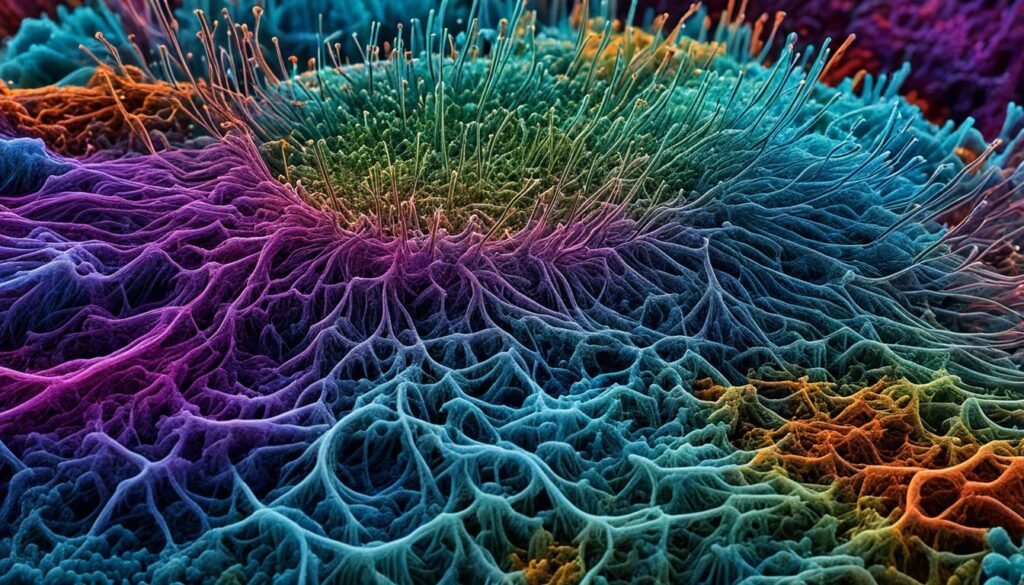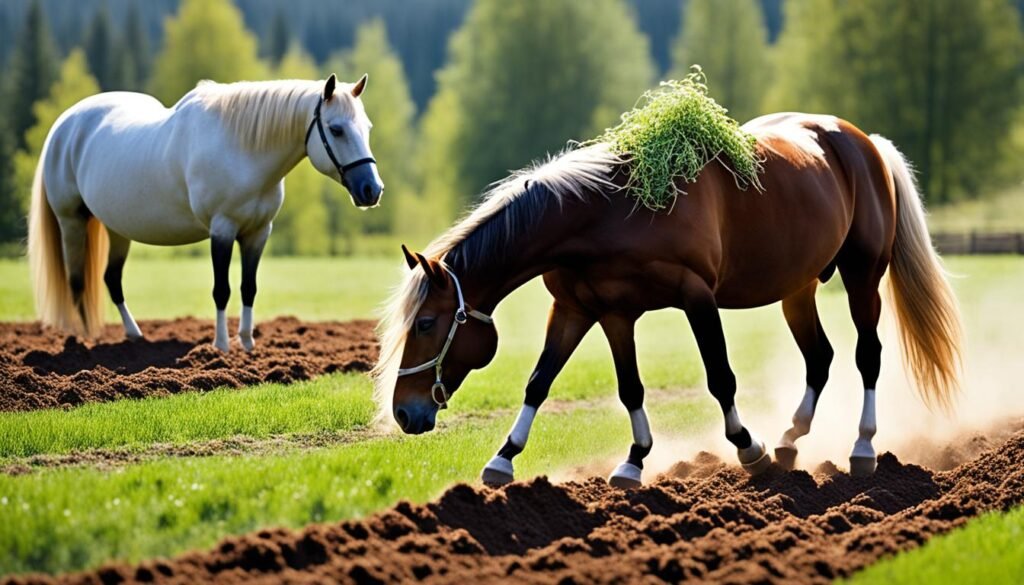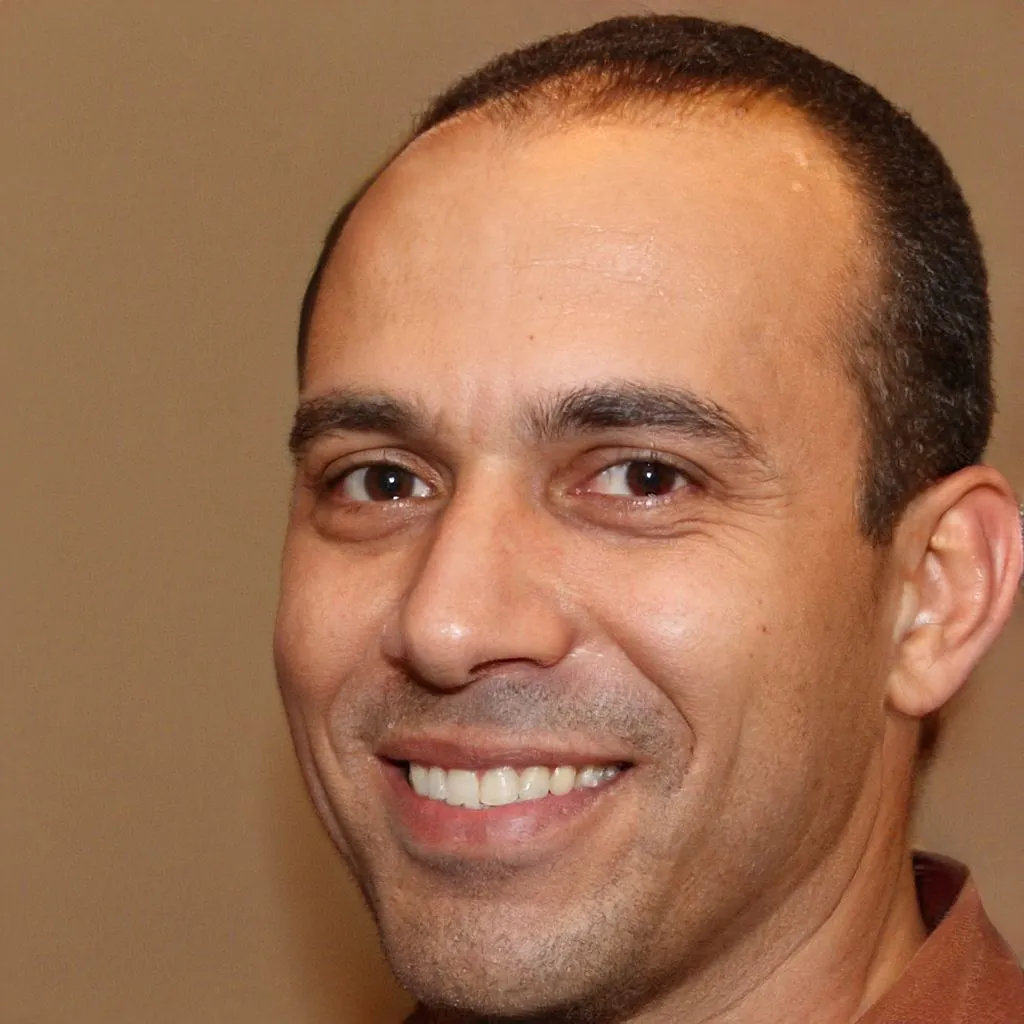The world around us is filled with a symphony of vibrations, and the equine realm is no exception. In this captivating exploration, we delve into the fascinating world of Horse-Generated Acoustic Waves and their profound impact on the microbial communities that call the soil their home.
By uncovering the intricate interactions between the aboveground and belowground realms, we aim to shed light on the intricate dance between Equine Sound Vibrations and the Geophonic Interactions that shape the Pedosphere Bioacoustics.
Key Takeaways
- Discover the science behind Horse-Generated Acoustic Waves and their influence on Soil Microbial Communities.
- Explore the role of Equine Sound Vibrations in shaping Geophonic Interactions within the Pedosphere.
- Understand the significance of Subsurface Acoustic Ecology and its implications for Seismic Stimuli Impact.
- Delve into the intricate Bioacoustic Interactions between the aboveground and belowground realms.
- Explore the potential applications of this knowledge in Sustainable Agriculture and future research opportunities.
Understanding Horse-Generated Acoustic Waves
The acoustic waves generated by horses during their movements are a fascinating aspect of equine sound vibrations.
As horses traverse the terrain, their hooves interact with the ground, creating a unique geophonic phenomenon that resonates through the soil and subsurface environments.
Equine Sound Vibrations
Each step a horse takes generates a distinct vibration that travels through the ground. These vibrations, known as equine sound vibrations, are influenced by factors such as the horse’s size, weight, and gait. The intensity and frequency of these vibrations can vary depending on the horse’s movement and the characteristics of the underlying soil.
Geophonic Interactions
The interaction between the horse-generated acoustic waves and the soil is known as geophonic interactions. These interactions create a complex subsurface acoustic ecology, where the vibrations from the horse’s locomotion interact with the physical and chemical properties of the soil.
This interplay between the equine sound vibrations and the pedosphere can have a significant impact on the soil microorganisms and the overall ecosystem.
Understanding the nuances of equine sound vibrations and geophonic interactions is essential for researchers and land managers seeking to explore the impact of horse-generated acoustic waves on the soil environment and the broader ecosystem.
Soil Microbial Communities and Their Significance
Buried beneath the lush vegetation and fertile soils lies a vibrant world teeming with life—the soil microbial communities. These microscopic powerhouses play a crucial role in the health and resilience of the pedosphere, the dynamic interface between the Earth’s surface and the atmosphere.
Understanding the significance of these diverse communities is essential as we explore the potential impact of horse-generated acoustic waves on the subterranean ecosystem.
Soil microorganisms, including bacteria, fungi, and archaea, are the unsung heroes of the natural world. They are responsible for a myriad of vital processes that sustain the delicate balance of the Soil Microbial Communities.
From nutrient cycling and organic matter decomposition to the regulation of greenhouse gas emissions, these microscopic denizens of the pedosphere are the foundation upon which the entire ecosystem rests.
Moreover, soil microbes contribute to the physical structure of the soil, binding together mineral particles and organic matter to create a stable, porous matrix that supports plant growth and water infiltration.
This intricate web of interactions not only nourishes the plants above but also provides a crucial habitat for a diverse array of soil-dwelling organisms, from earthworms to arthropods.
As we delve deeper into the significance of Soil Microbial Communities, it becomes clear that these microscopic powerhouses are the unsung heroes of the pedosphere. Their ability to mediate a wide range of ecological processes, from nutrient cycling to soil structure maintenance, underscores their central role in the overall health and resilience of the land.
Understanding how these communities may be influenced by the acoustic waves generated by horses is a crucial step in unraveling the complex relationships within the Pedosphere Bioacoustics.

The Impact of Seismic Stimuli on the Pedosphere
The intricate world beneath our feet, known as the pedosphere, is a dynamic and complex ecosystem that plays a crucial role in sustaining life on Earth. Within this realm, acoustic waves, such as those generated by the movement of horses, can have a profound impact on the soil’s microbial communities and the overall acoustic ecology.
Subsurface Acoustic Ecology
As seismic stimuli, like the rhythmic hoof beats of horses, travel through the soil, they interact with the diverse array of microorganisms that call the pedosphere home. These Seismic Stimuli Impact can trigger a cascade of responses within the Subsurface Acoustic Ecology, influencing the activity, diversity, and composition of the soil’s microbial communities.
Researchers have discovered that certain soil microbes are particularly sensitive to these acoustic vibrations, responding with changes in their metabolic processes, gene expression, and even their population dynamics.
This intricate interplay between the physical environment and the biological realm underscores the importance of understanding the complex relationship between the surface and the subsurface.
| Acoustic Parameter | Effect on Soil Microorganisms |
|---|---|
| Frequency | Specific frequency ranges can stimulate or inhibit microbial activity |
| Amplitude | Higher amplitudes can disrupt microbial cell membranes and signaling pathways |
| Duration | Prolonged exposure to seismic stimuli can lead to shifts in microbial community composition |
By understanding the Seismic Stimuli Impact and the Subsurface Acoustic Ecology, researchers and land managers can unlock new insights into the complex interplay between the physical and biological components of the pedosphere, paving the way for more sustainable land-use practices.
Horse-Generated Acoustic Waves and Their Effect on Soil Microorganisms
Exploring the intricate relationship between horse-generated acoustic waves and their impact on soil microorganisms is a captivating aspect of this article.
The vibrations produced by the equine gait and movement have been found to have a profound influence on the microbial communities thriving within the pedosphere, the soil layer that serves as the foundation for terrestrial ecosystems.
Soil microorganisms play a crucial role in maintaining the delicate balance of the Earth’s biosphere. These microscopic lifeforms, including bacteria, fungi, and archaea, are responsible for a myriad of vital processes, from nutrient cycling to organic matter decomposition.
Understanding how the acoustic waves generated by horses can affect these microbial communities is essential for understanding the complex interplay between the equine world and the pedosphere bioacoustics.
Emerging research suggests that the vibrations emanating from horses’ movements can stimulate the activity and diversity of soil microorganisms. These acoustic waves may enhance the metabolic processes of certain microbial species, leading to changes in nutrient availability and overall soil health.
Furthermore, the rhythmic patterns of horse-generated sounds may synchronize with the natural biorhythms of soil microbes, potentially influencing their population dynamics and community structure.
By delving deeper into this intricate relationship, researchers can gain valuable insights into the complex web of interactions within the pedosphere.
These findings hold the potential to inform sustainable land management practices, optimize agricultural productivity, and foster a greater appreciation for the delicate balance that exists between the equine world and the soil microbiome.
Exploring the Bioacoustic Interactions
As researchers delve into the fascinating world of horse-generated acoustic waves and their impact on soil microorganisms, they employ a range of monitoring techniques to unravel the complexities of these Geophonic Interactions.
These Pedosphere Bioacoustic studies aim to shed light on the intricate relationships between the vibrations produced by equine activities and the various microbial communities inhabiting the soil.
Monitoring Techniques
To capture the subtle nuances of these bioacoustic interactions, researchers utilize an array of innovative Monitoring Techniques. From advanced seismic sensors to specialized microphones, these tools enable scientists to precisely record and analyze the acoustic signatures generated by horses and their influence on the pedosphere.
One such approach involves the deployment of high-sensitivity geophones, which can detect even the slightest ground vibrations.
By strategically placing these sensors in the vicinity of equine activity, researchers can map the propagation and attenuation of the acoustic waves as they travel through the soil, providing insights into the Geophonic Interactions at play.
Complementing these seismic measurements, researchers also employ acoustic monitoring systems, such as specialized microphones and sound recorders. These devices capture the audible components of the horse-generated vibrations, enabling a more comprehensive understanding of the Pedosphere Bioacoustics.
By integrating the data gathered from these various Monitoring Techniques, scientists can construct a detailed picture of the complex relationships between horse-induced acoustic stimuli and the soil microbial communities.
This knowledge can then inform future research and guide the development of sustainable agricultural practices that harmonize with the natural rhythms of the pedosphere.
Case Studies and Field Observations
Exploring the real-world impact of horse-generated acoustic waves on soil microbial communities, this section delves into compelling case studies and field observations. These insights shed light on the intricate Seismic Stimuli Impact, Subsurface Acoustic Ecology, and Pedosphere Bioacoustics at play in diverse environments.
One striking case study comes from a grassland research site, where scientists documented the profound influence of equine sound vibrations on the local soil microbial population.
The findings revealed a measurable shift in the abundance and diversity of key microbial species, underscoring the profound bioacoustic interactions at work in the pedosphere.
Another field observation took place in a forested ecosystem, where researchers monitored the response of soil microorganisms to the acoustic stimuli generated by a herd of horses. The data collected highlighted the complex and nuanced ways in which these subsurface acoustic signals can shape the structure and function of microbial communities within the soil.
| Case Study | Location | Key Findings |
|---|---|---|
| Grassland Research Site | Midwestern United States | Significant shifts in soil microbial abundance and diversity due to equine sound vibrations |
| Forested Ecosystem | Pacific Northwest, USA | Complex responses of soil microorganisms to acoustic stimuli generated by horse herds |
These real-world examples underscore the profound and multifaceted ways in which horse-generated acoustic waves can influence the pedosphere bioacoustics and shape the delicate balance of soil microbial communities.
As we continue to explore this emerging field of study, these case studies and field observations will undoubtedly provide valuable insights and a deeper understanding of this captivating phenomenon.
Potential Applications and Future Research
The intriguing insights into how horse-generated acoustic waves influence soil microorganisms open up a world of possibilities for practical applications and future research directions. One area that holds immense promise is the field of Sustainable Agriculture.
Sustainable Agriculture
By understanding the bioacoustic interactions between equine sound vibrations and the pedosphere, researchers can explore innovative ways to optimize agricultural ecosystems. This knowledge could lead to the development of precision farming techniques that harness the power of sound waves to nurture soil microbial communities, enhance nutrient cycling, and promote overall plant health.
Some potential applications of this research in sustainable agriculture include:
- Designing specialized tillage implements that generate targeted acoustic stimuli to boost soil microbial activity
- Incorporating equine-inspired sound-based strategies into precision irrigation and fertilization systems
- Exploring the use of livestock-generated acoustic waves as a natural, non-invasive method for soil and crop management
As the field of Potential Applications continues to evolve, researchers are eager to delve deeper into the Future Research avenues. Exploring the long-term impacts of horse-generated acoustic waves on soil microbiomes, nutrient dynamics, and overall ecosystem function will be crucial in developing sustainable agricultural practices that work in harmony with nature.

Challenges and Limitations
Exploring the intricate relationship between horse-generated acoustic waves and their impact on soil microorganisms presents various challenges and limitations.
The complex interplay between equine sound vibrations, geophonic interactions, and the pedosphere’s microbial communities requires a multifaceted approach, drawing insights from diverse fields such as bioacoustics, soil ecology, and agricultural sciences.
One key challenge lies in accurately measuring and quantifying the subtle yet significant influence of horse-generated acoustic waves on the delicate balance of soil microorganisms.
Developing precise monitoring techniques and integrating them within field studies remains an ongoing endeavor, as the intricate web of variables involved can be difficult to isolate and control.
Furthermore, the need for interdisciplinary collaborations is paramount in advancing our understanding of this topic.
Bridging the gaps between researchers, practitioners, and stakeholders can foster a more comprehensive understanding of the challenges and limitations inherent in this field of study, ultimately leading to innovative solutions and a deeper appreciation of the bioacoustic interactions within the soil ecosystem.
FAQ
What are horse-generated acoustic waves and how do they interact with the soil environment?
Horses generate acoustic waves through their movements and actions, which can travel through the ground and interact with the soil environment. These vibrations, known as equine sound vibrations, create a unique form of geophonic interactions that influence the subsurface acoustic ecology.
How do soil microbial communities respond to the presence of horse-generated acoustic waves?
The acoustic waves generated by horses can have a significant impact on the soil microbial communities. These seismic stimuli can influence the activity, diversity, and overall dynamics of the microorganisms living within the pedosphere (the soil environment).
What are the potential applications of understanding the relationship between horse-generated acoustic waves and soil microorganisms?
Exploring the connections between horse-generated acoustic waves and soil microorganisms can lead to valuable applications, particularly in the field of sustainable agriculture. This knowledge can help optimize the interactions between above and belowground systems, leading to improved ecosystem function and enhanced agricultural practices.
What are the challenges and limitations in studying the effects of horse-generated acoustic waves on soil microorganisms?
Studying the complex interactions between horse-generated acoustic waves and soil microorganisms presents various challenges and limitations.
These include the inherent complexities of the soil environment, the need for interdisciplinary collaborations, and the ongoing efforts to develop more advanced monitoring techniques to better understand these bioacoustic interactions.
What are the key monitoring techniques used to investigate the impacts of horse-generated acoustic waves on soil microorganisms?
Researchers employ a variety of monitoring techniques to study the bioacoustic interactions between horse-generated acoustic waves and soil microorganisms.
These include seismic sensors, soil microbial community analysis, and advanced imaging technologies, among others, to capture the intricate relationships within the subsurface acoustic ecology.

